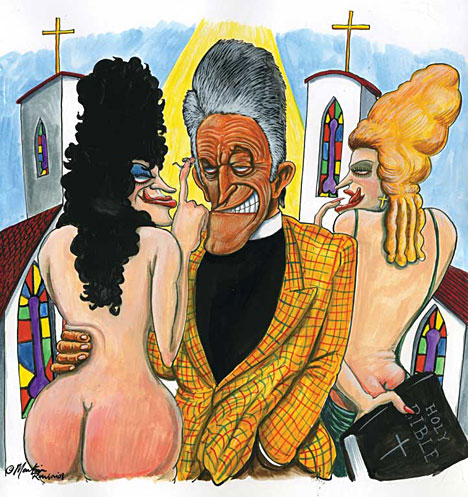 [div class=attrib]From Discover:[end-div]
[div class=attrib]From Discover:[end-div]
President Obama plans to spend billions building it. General Electric is already running slick ads touting the technology behind it. And Greenpeace declares that it is a great idea. But what exactly is a “smart grid”? According to one big-picture description, it is much of what today’s power grid is not, and more of what it must become if the United States is to replace carbon-belching, coal-fired power with renewable energy generated from sun and wind.
Today’s power grids are designed for local delivery, linking customers in a given city or region to power plants relatively nearby. But local grids are ill-suited to distributing energy from the alternative sources of tomorrow. North America’s strongest winds, most intense sunlight, and hottest geothermal springs are largely concentrated in remote regions hundreds or thousands of miles from the big cities that need electricity most. “Half of the population in the United States lives within 100 miles of the coasts, but most of the wind resources lie between North Dakota and West Texas,” says Michael Heyeck, senior vice president for transmission at the utility giant American Electric Power. Worse, those winds constantly ebb and flow, creating a variable supply.
Power engineers are already sketching the outlines of the next-generation electrical grid that will keep our homes and factories humming with clean—but fluctuating—renewable energy. The idea is to expand the grid from the top down by adding thousands of miles of robust new transmission lines, while enhancing communication from the bottom up with electronics enabling millions of homes and businesses to optimize their energy use.
The Grid We Have
When electricity leaves a power plant today, it is shuttled from place to place over high-voltage lines, those cables on steel pylons that cut across landscapes and run virtually contiguously from coast to coast. Before it reaches your home or office, the voltage is reduced incrementally by passing through one or more intermediate points, called substations. The substations process the power until it can flow to outlets in homes and businesses at the safe level of 110 volts.
The vast network of power lines delivering the juice may be interconnected, but pushing electricity all the way from one coast to the other is unthinkable with the present technology. That is because the network is an agglomeration of local systems patched together to exchange relatively modest quantities of surplus power. In fact, these systems form three distinct grids in the United States: the Eastern, Western, and Texas interconnects. Only a handful of transfer stations can move power between the different grids.
[div class=attrib]More from theSource here.[end-div]

 [div class=attrib]From Eurozine:[end-div]
[div class=attrib]From Eurozine:[end-div] [div class=attrib]From Eurozine:[end-div]
[div class=attrib]From Eurozine:[end-div] [div class=attrib]From Eurozine:[end-div]
[div class=attrib]From Eurozine:[end-div]